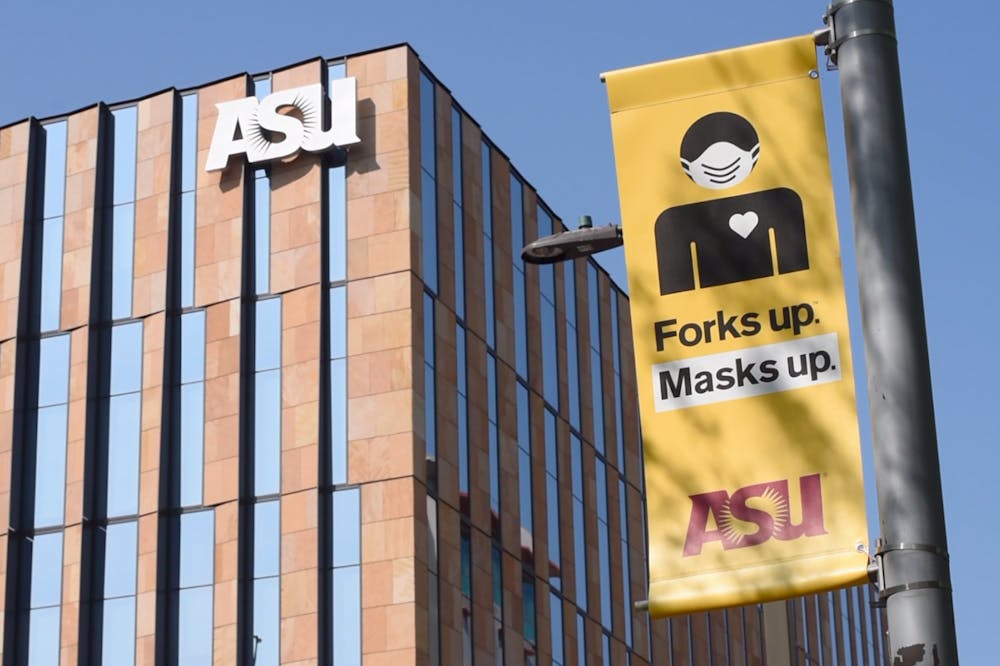Self-paced learning, optional in-person attendance and deadlines voted on by the class are now a staple in Christina Carrasquilla's classes after teaching during the COVID-19 pandemic.
Before this, Carrasquilla, a senior lecturer in graphic information technology, taught a mix of in-person and asynchronous online classes which worked in tandem to create a HyFlex classroom – an instructional model that allows a class to easily transition between learning environments.
“I took a lot of what I knew from asynchronous teaching and brought it into my synchronous classroom teaching,” Carrasquilla said. “But then the pandemic in the HyFlex situation let me bring some of that into my asynchronous teaching — so I feel that both of those have elevated.”
For faculty across the University, the pandemic changed how they taught their classes. Faculty could see that recording their lectures boosted grades, that some assignments being virtual allowed students to produce a higher quality of work and that class does not need to be mandatory in order for students to be successful.
In the fall of 2020, ASU utilized three learning modes based on the severity of COVID-19 cases, including in-person, ASU Online and ASU Sync. Virtual learning continued until classes returned to in-person in the fall of 2021.
The midst of the pandemic also led ASU Online to have record enrollment; over 60,000 students enrolled in ASU Online for this semester and accompanying this were over 3,000 faculty teaching virtually.
"I think we will see the gap between the online and immersion experience continue to narrow as we use what (we) have learned over the past few years to increase the number and scope of virtual opportunities accessible to our students," said Dominique Perkins, manager of Marketing and Communication at the School of Life Sciences, in an email.
Laura Guerrero, a professor at the Hugh Downs School Of Human Communication, already had some preparation from virtual trials during spring break in 2020 and online teaching workshops years prior.
"For the first semester, it was getting materials up quickly. Putting lectures online and changing in-class activities were two things that could be done online pretty rapidly," Guerrero said.
Once she began teaching online, Guerrero began to notice that some assignments worked better online, as it allowed students to easily view instructions or divide the work into group projects more equally.
"I have others (activities) that didn't work as well online, and I've kept those in the classroom, so being able to learn what affordances work well has been really helpful," Guerrero said.
When ASU started to transition to online learning due to the pandemic, Tejaswi Linge Gowda, a clinical assistant professor for the School of Arts, Media and Engineering, was teaching three programming classes.
"There was value in actually recording the class, especially because I was able to share my screen on Zoom. It worked out really well. And the thing I loved about Zoom was I could look at my students' screen as well, and they could share their screen with me," Gowda said.
Guerrero also noted that students having the ability to rewind lectures and videos produced a better quality of work, noting an example of students analyzing movie clips while looking for psychological attachment styles.
Due to the success, Carrasquilla felt through her new teaching methodologies, students in her classes did better. She presented her findings at the 2022 UCDA Design Educators Summit: AGENCY. Grades between Spring 2020 and Spring 2022 increased by 3.2%, evaluations of the course increased by 2% and instructor evaluations increased by 8%.
"I was surprised to see quite an increase (in ratings) on the instructor evaluations. Out of all the results, that was the biggest change – and I think it comes entirely from the students feeling like I cared," Carrasquilla said. "The students felt like they were in control and that I cared, which was always true, but they felt they felt it more genuinely from these approaches."
Students felt like they could control how they learned which was attributed to what Carrasquilla called "democratized delivery," an approach where the class agrees on when to move on to the next topic, they voted on due dates and the majority of work was done together during lessons.
"They really appreciate that and feel like a weight is lifted — and that they can really spend time to learn rather than hurry up and get it done," Carrasquilla said.
Even for more technologically advanced classes, Gowda was able to deliver a programming kit to students so they could still learn.
"We had required hardware and used the electronics lab for a couple of classes,” Gowda said. “So we came up with a programming kit, basically, which has standard interface wires where you could just put them like Legos – basically a 'plug and play' – and we were able to mail them to all our students.”
Even though students were more isolated, online learning and open-book test-taking prepared them for more of a professional environment than in-class learning, Guerrero said.
"In the real world, you have to be good at both. You have to be able to sit at your computer and come up with something and use resources, but you also have to be good at coming up quickly with a kind of a paragraph-length response off the cuff," Guerrero said. “As professors, we want students to walk out of our classrooms being able to master all those kinds of assessments as well.”
Edited by Jasmine Kabiri, Wyatt Myskow and Kristen Apolline Castillo.
Reach the reporter at caera@asu.edu and follow @CaeraLearmonth on Twitter.
Like The State Press on Facebook and follow @statepress on Twitter.

Caera Learmonth is a full-time reporter for the Community and Culture desk. She was previously the Executive Editor of her high school newspaper and has taken journalism programs at the School of the New York Times and University of Southern California.




